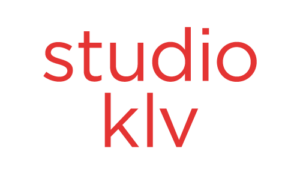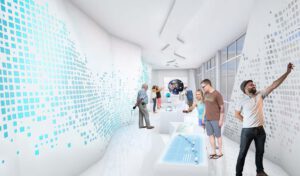Kürzlich durfte ich einen Beitrag für den Newsletter von Interp Europe, dem europäischen Dachverband für Natur- und Kulturinterpretation verfassen. Da dort der Platz relativ begrenzt war, musste ich meinen ursprünglichen Beitrag stark kürzen.
Meine etwas ausführlicheren Ideen zu der Frage, wie Natur- und Kulturinterpretation im Sinne einer nachhaltigen Entwicklung in Museen und Ausstellungen eingesetzt werden kann, kannst Du im Folgenden lesen:
Location-specific communication in museums
The practice of phenomenon-based communication in museums often focusses on the display and interpretation of exhibits (cf. Veverka 2015). However, the increasing use of scenographic arrangements in exhibitions and museums calls for another approach.
At the core of this new approach is a scenography based on the location, thus often the architecture, of the museum. With it, exhibition design and scenography directly connects to the phenomena of the environment, hence the building. While this is obvious and commonly used, taking this approach one step further is not: By identifying the phenomenon using the communication rectangle and developing a theme-centred interaction, the unique potential of the location can not only be translated into an interior design but into a scenography, which is an interactive visitor experience.
From heritage to a sustainable future
It has been outlined elsewhere, why heritage interpretation has an obligation to a sustainable development and at the same time there are various opportunities for heritage interpretation practice by embracing the concept of Education for Sustainable Development (ESD), ESD is at the same time an opportunity to improve the practice of interpretation (Ludwig 2009).
On the one hand, regarding educational activities in museums, It has been argued that ESD is the pedagogic approach for exhibitions and museums in the 21st century (Peter and Garthe 2014). But the intersections between heritage interpretation and museum pedagogics still need to be further excavated.
On the other hand, sustainability is largely a blind spot within the realm of exhibition development. Obviously, there are a multitude of great exhibitions on issues about sustainability. But the way in which these exhibitions are curated and exhibits are interpreted are not focused on the key competencies of ESD (cf. Haan 2006). So, the challenge for future exhibitions is to develop exhibits that foster competence-based learning. In doing so, it has to be underlined that not all competencies are equally suitable to be acquired within exhibitions and museums.
Furthermore, the sustainable production and operation of exhibitions and museums on heritage topics offer opportunities to contribute to a sustainable future.
Why interpretive centres of protected areas need to be thought from a visitor perspective
An attractive visitor centre is nowadays a must-have for every large protected area. But many of the visitor centres in Germany have a serious problem: They are stuck in environmental education and neglect the anthropocene: With a dramaturgy following habitat types, nature is „rebuilt“ within these exhibitions – with often- extensive effort. Thus, too often a visit to the visitor centre effectively replaces a real experience of nature. Developing visitor centres that truly support the mission of Protected Areas would require a radically new approach which puts the human being and its stories in the centre of the concept (Garthe 2017).
The Natural Futures Museum
Heritage interpretation in natural history museums is struggling to find its relevance in the 21st century (cf. Janes 2009). This is why a reconceptualisation of the natural history museum towards a future-oriented institution seems to be necessary.
To benefit from the collection as the key resource, natural history museums can focus on Interaction, participation and object-related interactions that foster a public understanding of collections. Before the background of a participative scientific society, natural history museums can evolve into the place to address global challenges, discuss the future of the planet and thus increase the relevance for visitors (Garthe 2018).
Exhibitions as an instrument of a Participatory Scientific Society
The potential role of interpretation in a post-fact society has been discussed (Lehnes 2017). As science and the interpretation of its results are becoming increasingly central to our society, it can be argued that scientific literacy or a public understanding of research are becoming essential for active citizens as well as for the democratic cultures as a whole.. To tackle these challenges, we need to move from a knowledge society to a Participatory Scientific Society that empowers citizens to take ownership in crucial debates.
Interpretative activities can support this by not communicating (scientific) themes, but by communicating the research process itself. Successful examples are Open Research Labs, Sciencetainment events, like Worm charming, artistic research projects, incorporating transdisciplinary research or Citizen Science programmes, like BioBlitz, or embracing the approaches of the Maker community (cf. Garthe 2015). Like this, exhibitions and museums can become an interface between scientists, volunteers and citizens and can serve as a core institution of Participatory Scientific Society.
References
Garthe, C., 2015. Using interactive experiences to communicate nature. Gothenburg.
Garthe, C., 2017. Weshalb Naturzentren verhindern, dass Besucher die Natur entdecken [online]. Available from: http://ausstellung-museum-nachhaltigkeit.blogspot.de/2017/05/weshalb-nationalparkzentren-verhindern.html.
Garthe, C., 2018. The Natural Futures Museum: Interactivity and Participation as Key Instruments for Engaging Audiences. In: E. Dorfman, ed. The future of natural history museums. Milton Park Abingdon Oxon, New York NY: Routledge, 140–154.
Haan, G. de, 2006. The BLK ‘21’ programme in Germany: a ‘Gestaltungskompetenz’‐based model for Education for Sustainable Development. Environmental Education Research, 12 (1), 19–32.
Janes, R.R., 2009. Museums in a troubled world. Renewal, irrelevance or collapse? London, New York: Routledge.
Lehnes, P., 2017. Interpretation in Darkening Times. Interpret Europe Newsletter (1), 3–4. Available from: http://www.interpret-europe.net/top/news/singlepage-news/news/interpretation-in-darkening-times.html?tx_news_pi1%5Bcontroller%5D=News&tx_news_pi1%5Baction%5D=detail&cHash=676a8bbafb974f12220e77dd3671d463.
Ludwig, T., 2009. ESD as a Chance for the Worldwide Improvement of Interpretation. Athens.
Peter, M., and Garthe, C.J., 2014. Education for sustainable development as a concept for science centres and museums. Engagement for a sustainable future. Spokes (4), 12–17. Available from: http://www.ecsite.eu/sites/default/files/spokes6_0.pdf.
Veverka, J.A., 2015. Interpretive master planning. Strategies for the new millennium, philosophy, theory and practice. Edinburgh: MuseumsEtc Ltd.
Dieser Blogpost basiert auf meinem Beitrag für den Interp Europe Newsletter: http://www.interpret-europe.net/top/news/singlepage-news/news/future-challenges-for-interpretation-in-exhibitions/?tx_news_pi1%5Bcontroller%5D=News&tx_news_pi1%5Baction%5D=detail&cHash=7c75e9bf4a57a2645cfb2ee241392d64







Trackbacks/Pingbacks